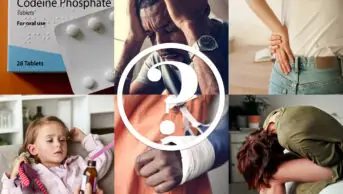
Shutterstock.com
Prescribers should consider the off-label use of antidepressants as well as exercise and psychological therapy, for the treatment of chronic primary pain in adults, chronic pain guidelines from the National Institute for Health and Care Excellence (NICE) have stated.
But opioids, paracetamol and non-steroidal anti-inflammatory drugs should not be initiated for the treatment of chronic primary pain.
The final guideline from NICE, published on 7 April 2021, defines chronic pain as pain that lasts for more than three months — which can either be primary, or secondary to an underlying condition, such as osteoarthritis or ulcerative colitis.
Chronic primary pain has no clear underlying cause, or is pain that is out of proportion to any observable injury or disease.
NICE’s draft guidelines on this area were criticised as being “not fit for purpose” when they were published in August 2020.
In its response to the consultation on the draft version, the Faculty of Pain Medicine of the Royal College of Anaesthetists said that the guidance failed to “succinctly distinguish” between chronic pain and chronic primary pain.
To manage chronic primary pain, NICE suggests non-pharmacological management, including supervised group exercise programmes; and psychological therapy, such as cognitive behavioural therapy, for those aged 16 years and over.
It also suggests clinicians consider a single course of acupuncture or dry needling, providing it is delivered within certain clearly defined parameters.
In terms of pharmacological management of chronic primary pain, the guideline says that prescribers should consider an antidepressant — such as amitriptyline, citalopram, duloxetine, fluoxetine, paroxetine or sertraline — for patients aged 18 years and over. The guideline says evidence indicates that antidepressants may help with quality of life, pain, sleep and psychological distress, even in the absence of a diagnosis of depression.
Opioids, paracetamol and non-steroidal anti-inflammatory drugs should not be initiated for the management of chronic primary pain in people aged 16 years and over; and similarly, antiepileptic drugs, antipsychotic drugs, benzodiazepines, ketamine or local anaesthetics should not be started.
According to NICE, this is because while there is little or no evidence that they make any difference to people’s quality of life, pain or psychological distress, they can cause harm, including possible addiction.
In cases where patients are already taking these medications, the guideline says that a review must be carried out with the patient to make a shared decision about whether to continue with them or not.
The guideline highlights that chronic primary pain and chronic secondary pain can coexist, and — in cases where diagnostic categories overlap between primary and secondary pain conditions — management should be led by this guideline and the NICE guideline for the secondary pain condition.
Heidi Wright, policy and practice lead for the Royal Pharmaceutical Society (RPS) in England, said: “We are particularly pleased that the guideline has clarified the definition of primary chronic pain and that it has been clearly outlined that primary chronic pain can coexist with secondary pain.
“We believe this is vitally important in ensuring all patients with chronic pain, including those with a known source of their pain, can be managed effectively and offered analgesics as appropriate,” she added.
Wright also said the RPS was pleased to see the principles of safe, rational and evidence-based medicine underpinning pharmacological approaches to managing pain.
“Importantly, we support the section outlining which medicines should not be initiated, and the emphasis on the careful withdrawal of medicines which are shown not be beneficial to the patient in terms of reducing pain intensity and functionality.”
Martin Marshall, chair of the Royal College of GPs, said that he understood the move from pharmacological treatments to a focus on physical and psychological therapies, but that access to non-pharmacological treatments needed to be improved.
“Access to these therapies can be patchy at a community level across the country, so this needs to be addressed urgently, if these new guidelines are to make a genuine difference to the lives of our patients with primary chronic pain,” he said.
“It’s also key that the guidelines advise against starting drug therapy for patients who have chronic primary pain — but not to stop medication already being taken, particularly if they report some benefit.”
In the guideline, NICE said that it is also developing a guideline on the safe prescribing and withdrawal of medicines associated with dependence, which is expected to be published in November 2021.


